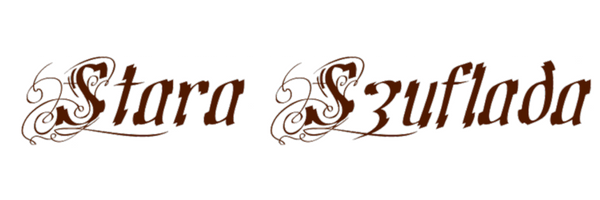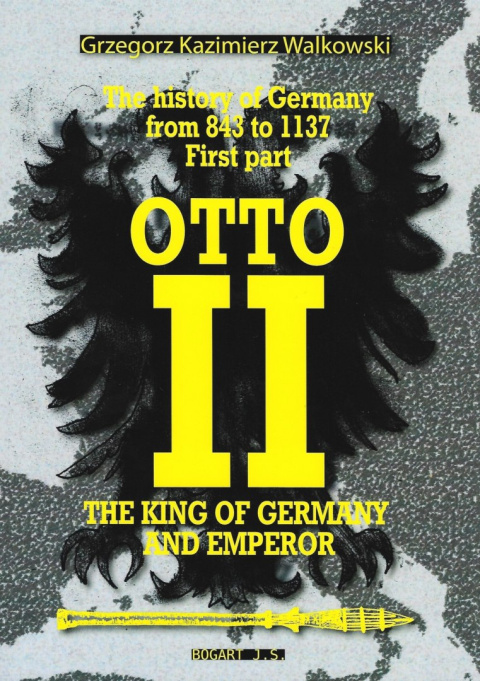-
Koszyk jest pusty
-
x

-
Koszyk jest pusty
-
x
- Kategorie
-
The History of Germany from 843 to 1137 First part. Years 834-1024 The King of Germany and emperor


| Wysyłka w ciągu | 24 godziny |
| Cena przesyłki | 11 |
| Dostępność |
Mała ilość
|
| Kod kreskowy | |
| ISBN | 978-83-938709-6-7 |
| EAN | 9788393870967 |
| Zostaw telefon |
Autor: Grzegorz Kazimierz Walkowski
Rok wydania: 2020
Ilość stron: 712
Oprawa: twarda z obwolutą
Format: 17,0 cm x 24,0 cm
Język: angielski
Część pierwsza monografii obejmuje dzieje królestwa i jego supremacji w Europie Środkowej i południowej do końca panowania dynastii Ludolfingów. Jako opisująca tak rozległy okres historyczny nie może uchylić się od ukazania wydarzeń wcześniejszych, które wywarły wpływ na bieg historii w przedmiotowym zakresie. Z tego powodu, jak również z przyczyny wniosków wyciągniętych przez historiografię europejską z poszczególnych faz tworzenia Rzeszy rozumianej jako Święte Cesarstwo Rzymskie, w powiązaniu z ewolucją terytorialno-dynastyczno-ustrojową Rzeszy Franków stworzonej przez Pepina Krótkiego i jego syna Karola Wielkiego, musi zostać choćby w najogólniejszych zarysach przedstawiona tej, frankońskiej Rzeszy historia, wraz z wskazaniem najważniejszych etapów przemian ustrojowych.
Spis treści:
The history of Germany from 843 to 1137
Table of Contents
First part Years 843-1024
Chapter I
The Frankish Reich and its disintegration. The Carolingians as kings of the East Franks
1.1. The Frankish Reich. Treaty of Verdun. West and East Franks under the Carolingian Sceptre /9
1.2. The situation in Italy and the Eastern Empire /27
Chapter II
Conradin, successor of Carolingian family on throne of Kingdom of the East Franks
2.1. Reich of Western Christians tribes /59
2.2. The rise of a federal state - the Kingdom of Germany /92
Chapter III
Liudolfings
3.1. Henry the Fowler, the son of Otto the Illustrious /123
3.2. Otto I assumes power over Saxony and the Kingdom of Germany /135
3.3. Army of the Kingdom of Germany from the time of the Liudolfings /163
3.4. International policy and the reign of Otto I the Great /182
3.4.1. Pan-European aspirations of the Liudolfing dynasty /182
3.4.2. Otto I and Bohemia, Italy and Byzantium /195
3.4.3. Theophano /207
3.4.4. Congress of Quedlinburg from the year 973 /218
3.4.5. The relations of the Kingdom of Germany with the Danes at the end of the 10th century /229
3.4.6. Relations of Kingdom of Germany with Polabian Slavs /234
3.4.6.1. Principality od Stodorans. Prince Tugumir sets the political-religious direction for Polabian Slavs, including Mieszko I. Early relations of Kingdom of Germany with Piast state /234
3.4.6.2. The Eastern March as an instrument of the Sax- on policy towards the Slavs /249
3.4.6.3. Archbishopric of Magdeburg - political successor of Eastern March /278
3.4.6.4. The situation on the border of the Kingdom of Germany with the Piast state in the last quarter of the 10th century /283
3.4.7. Organizational units of Germany and Reich /292
3.5. Death of Otto I. Reign of Otto II /298
3.6. Otto III /340
3.7. Henry II the Saint /421
3.7.1. Succession to the German throne after the death of Otto III /421
3.7.2. Kingdom of Germany in the years 1005-1012. two first Lusatian wars /445
3.7.3. The imperial diadem for King Henry II of Germany and Italy /472
3.7.4. Italian policy of Henry II. Political relations of the Kingdom of Germany with France /517
3.7.5. Summary of Henry II's reign /527
Appendices
Liutprand of Cremona, Antapodosis /542
Liutprand of Cremona, Relatio de legatione Constantynopolitana /556
Gesta Episcoporum Cameracensium /574
Privilegium Ottonianum /602
Excerpts of the letter of St. Bruno to King Henry II /607
Index of themas /611
Index of persons /621
Index of geographical names /635
Index of topics /645
Articles
War between Hodo and Mieszko from 972 /655
The war between the Kingdom of Germany and the Slavs from 976 /695
Dane producenta
P.P.U.H. Bogart
Kajetanów 117 k/Kielc
26-050 Zagnańsk
Poland
41 368 03 94
biuro@bog-art.com.pl
